The emerald green arborvitae and the Leyland cypress are popular trees often grown as windbreaks, privacy trees, or ornamental trees. There are some key differences, though. Knowing those differences can help gardeners decide which tree is best for their properties.
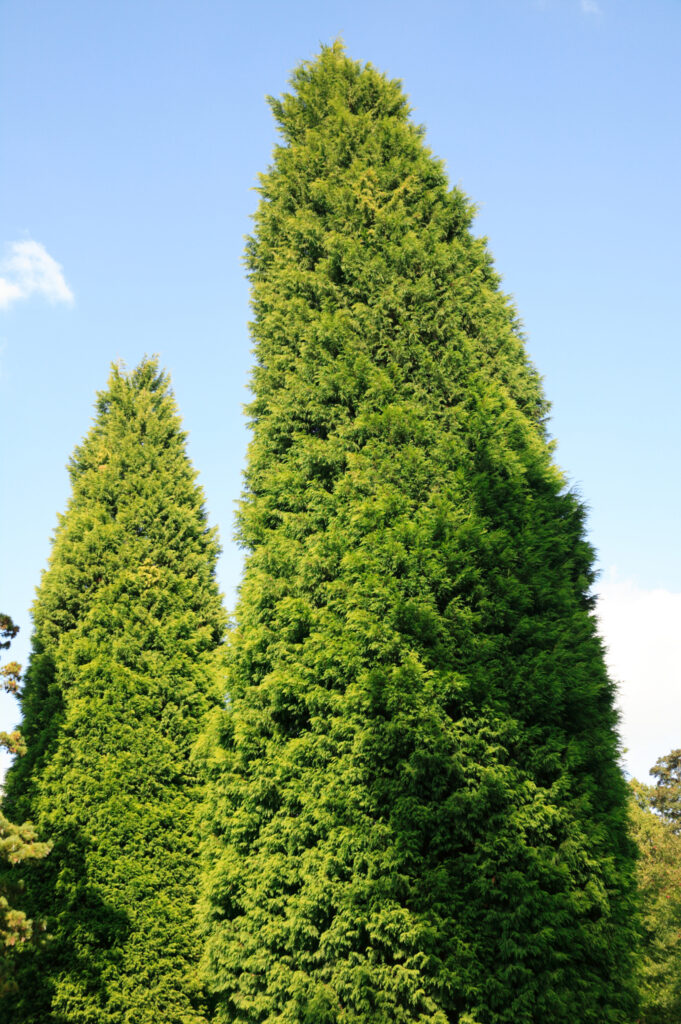
Leyland cypress trees grow much larger than emerald green arborvitaes. That’s just one of several differences between the two trees.
©iStock.com/TonyBaggett
| Emerald Green Arborvitae | Leyland Cypress | |
|---|---|---|
| Scientific Name | Thuja occidentalis | Cupressus leylandii |
| Common Name | Emerald Green Arborvitae, Smaragd | Leyland Cypress, Leylandii |
| Size | Height – 12-20 feet Width – 3-10 feet | Height – 60-70 feet Width – 10-15 feet |
| Shape | Columnar | Pyramidal, Conical |
| USDA Hardiness Zones | Zones 2-8 | Zones 6-10 |
| Toxicity | Toxic to people and pets | Mildly toxic to people, toxic to grazing animals |
Key Differences Between Emerald Green Arborvitae and Leyland Cypress
Origins
The Leyland Cypress tree is a hybrid of the Monterey cypress and the Nootka cypress.
The emerald green arborvitae is a type of eastern white cedar which is native to North America.
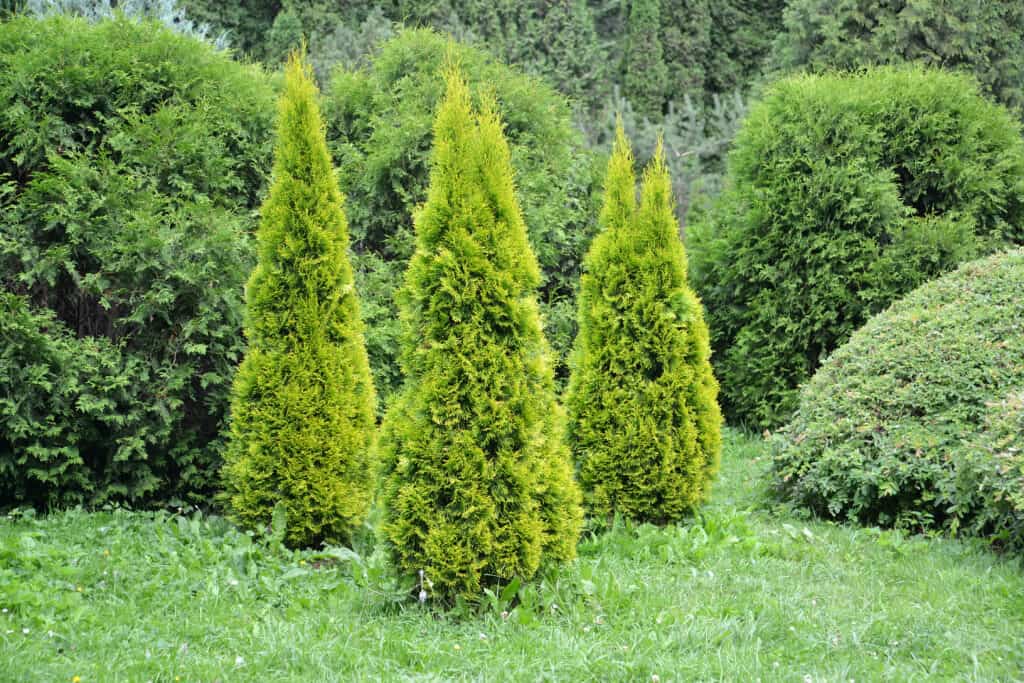
The emerald green arborvitae tree is a type of eastern white cedar.
©Irina Borsuchenko/Shutterstock.com
Size
The most obvious difference between the emerald green arborvitae and the Leyland cypress is their disparate sizes. While the emerald green arborvitae grows up to 20 feet tall, the Leyland cypress can reach towering heights of up to 70 feet. That difference alone helps many gardeners determine which is best for their backyards and property lines. For a smaller yard, the emerald green arborvitae is likely the better choice. Leyland cypress trees are much better suited for larger properties.
Hardiness Zones
Another stark distinction between these trees is their different hardiness ranges. The Leyland Cypress is a warm-weather tree. It is cold-hardy only down to Zone 6, meaning this tree would be a terrible choice for properties in the northern United States.
Meanwhile, the emerald green arborvitae is cold-hardy to Zone 2. This tree can be grown in the northernmost regions of the continental U.S. It will not do well in the south, though. The hardiness range for the emerald green arborvitae ends at Zone 8, while the Leyland Cypress extends up to a toasty Zone 10.
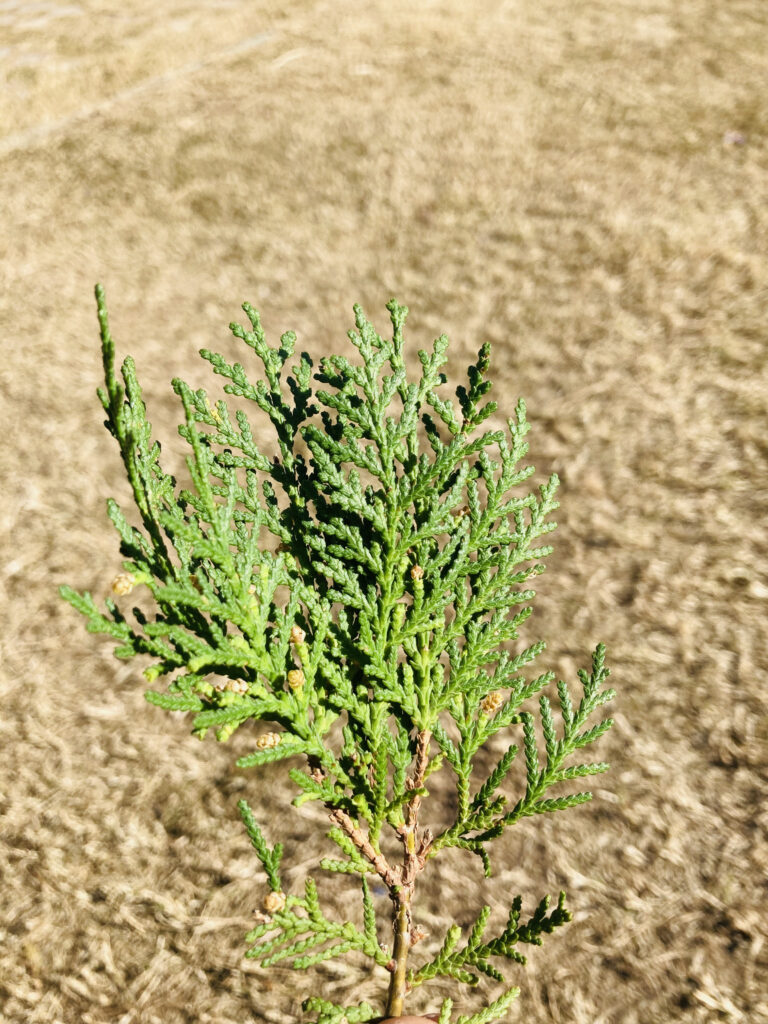
The Leyland cypress can grow in a variety of different soils, but it is not cold-hardy below Zone 6.
©iStock.com/KK1HB
Growth
The difference in yearly growth rates varies widely between the two trees.
The Leyland cypress grows quite rapidly. This tree can grow up to two feet per year. In its first few years, it may grow even faster than that, sometimes up to four feet per year.
Meanwhile, the emerald green arborvitae grows much more slowly. It grows at a rate of 12 inches per year at most.
If you are looking for a tree that can provide a property break quickly, the Leyland cypress may be a better choice (assuming you have the ample space the tree will require).
If you are fine with slow and steady, consider the emerald green arborvitae.
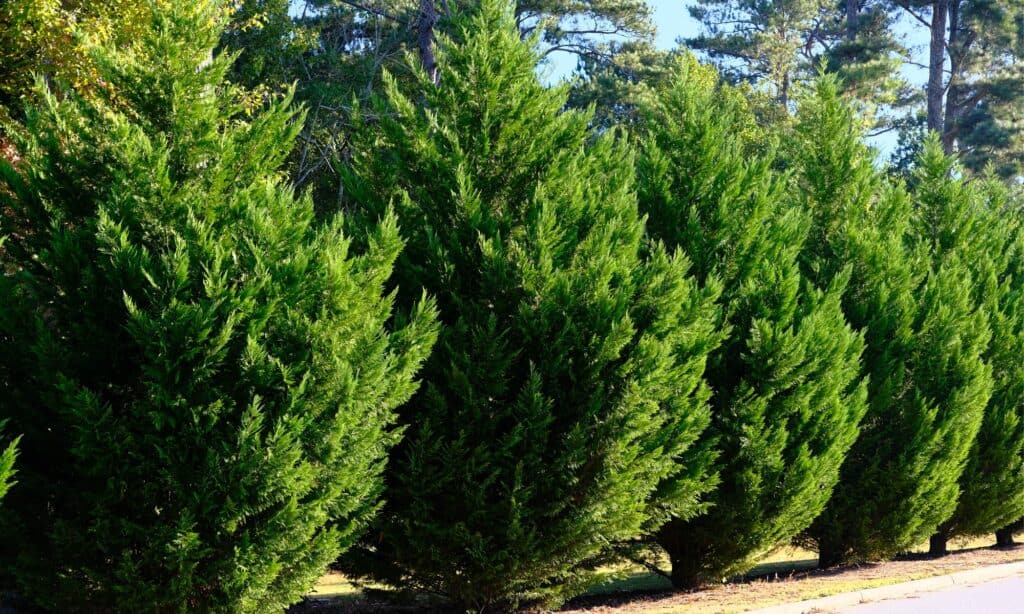
Leyland cypress trees grow very quickly.
©iStock.com/dbvirago
Soil
The emerald green arborvitae thrives in moist but well-drained soil. Standing water will hinder the plant’s growth and can invite disease and root rot. Yearly mulching will help the soil maintain balanced moisture.
The Leyland cypress is not picky regarding its soil. It can tolerate loam, clay, or sand. As long as there is not constant standing water that over-saturates the soil, this tree will continue to grow. Choose a well-draining site and let this fast-growing tree take off.
Planting
The planting time for both trees is the same. Both the emerald green arborvitae and the Leyland cypress fare best when planted in mid-fall.
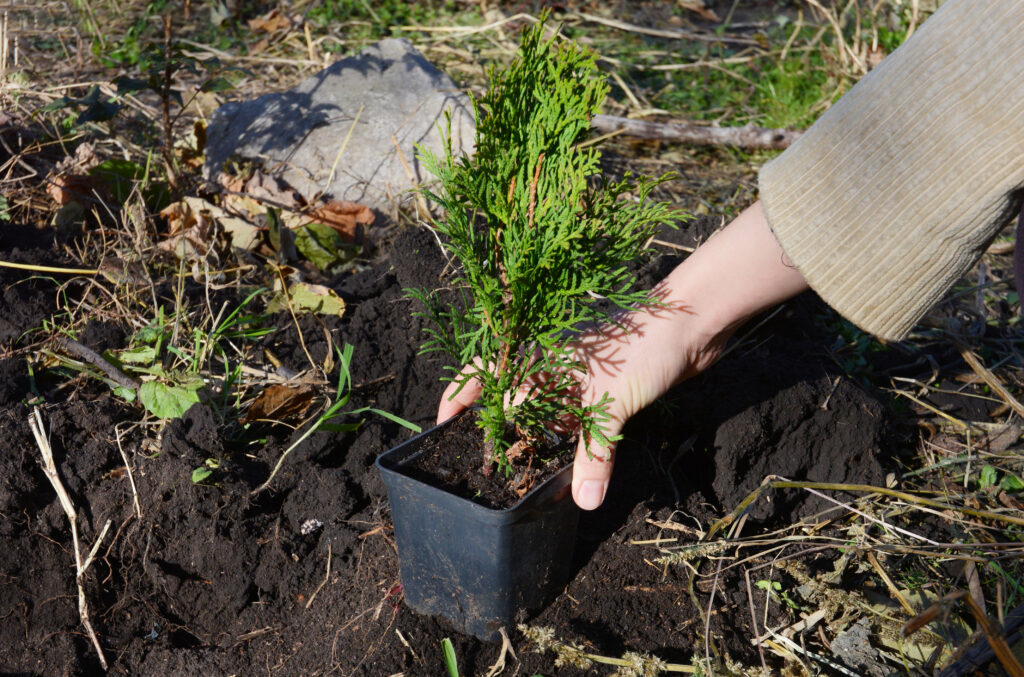
Emerald green arborvitae trees are best planted in mid-fall.
©iStock.com/Lex20
Water
The emerald green arborvitae requires a generous amount of water for the first few months after planting. Water twice a week for several months. After that, water once per week for the next year. Once the tree is established after that first year, it will need around half an inch of water per week.
The Leyland cypress needs consistent watering in the first few months after planting. Water several times per week during those early days.
After those first few months, watering can slow down a bit. For the next year, plan on providing about a gallon of water per week for each foot of height. A five-foot tree gets five gallons of water per week, for example. The best practice is to divide the weekly water amount into two separate waterings each week. This will help eliminate runoff and ensure the tree gets the full benefit of the water.
Watering can continue to be reduced as the Leyland cypress tree matures. In the second year, water twice weekly in the spring through fall, backing off to once a month in the winter.
For 3-5-year-old trees, water twice a month from spring through fall and once a month in winter.
Then, water once every three weeks in summer and once every six weeks in winter until the tree is seven years old.
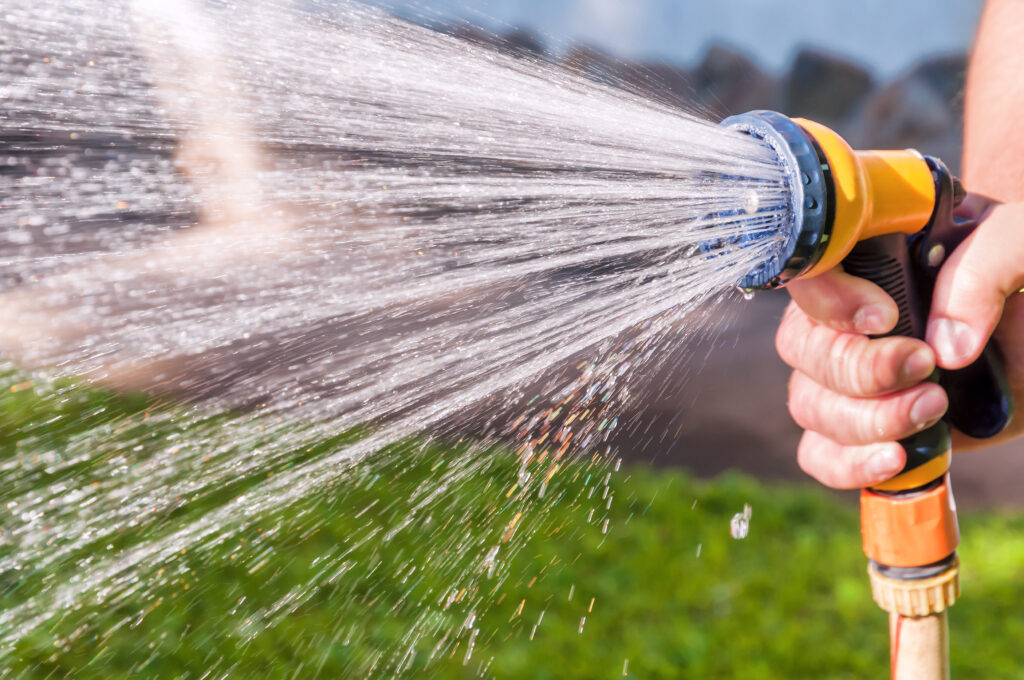
Both the emerald green arborvitae and Leyland cypress trees need abundant water, especially in the first few months after planting.
©iStock.com/vovashevchuk
Common Pests & Plant Diseases
These trees are very different in their resistance to pests and other problems.
The emerald green arborvitae is resistant to most insects and diseases. Bagworms can sometimes be a problem as they feed on the tree’s foliage. Removing the egg bags before the hatch can help mitigate the problem.
Spider mites can also be problematic. They can often be removed with the jet-spray setting of a garden hose. If the problem persists, insecticidal soap or neem oil can be used to eliminate the infestation.
Stem canker is one of the few diseases that can create major problems for the emerald green arborvitae tree. This fungal disease shows itself through lesions that ooze a sticky resin from the tree’s branches. Remove the infected branches immediately. If the disease is present on the trunk, it may prove fatal for the tree.
The Leyland cypress is much more prone to pests and diseases than the emerald green arborvitae, to the point where some gardeners refuse to plant the tree.
Bagworms love this tree and can strip branches clean in a very short time. Removing the egg bags from the tree is vital to the tree’s survival. Spider mites are also a common problem. Treat an infestation in the same way as you would on an emerald green arborvitae tree.
Leyland cypress trees are highly susceptible to fungi that cause root rot and cankers. Both are incurable. Growers are advised to check with horticultural experts in their areas. Suppose the Armillaria and Phytophthora fungi (root rot) and/or Seiridium and Botryoshpaeria fungi (cankers) are prevalent in your region. In that case, you may want to consider a different tree for your property.
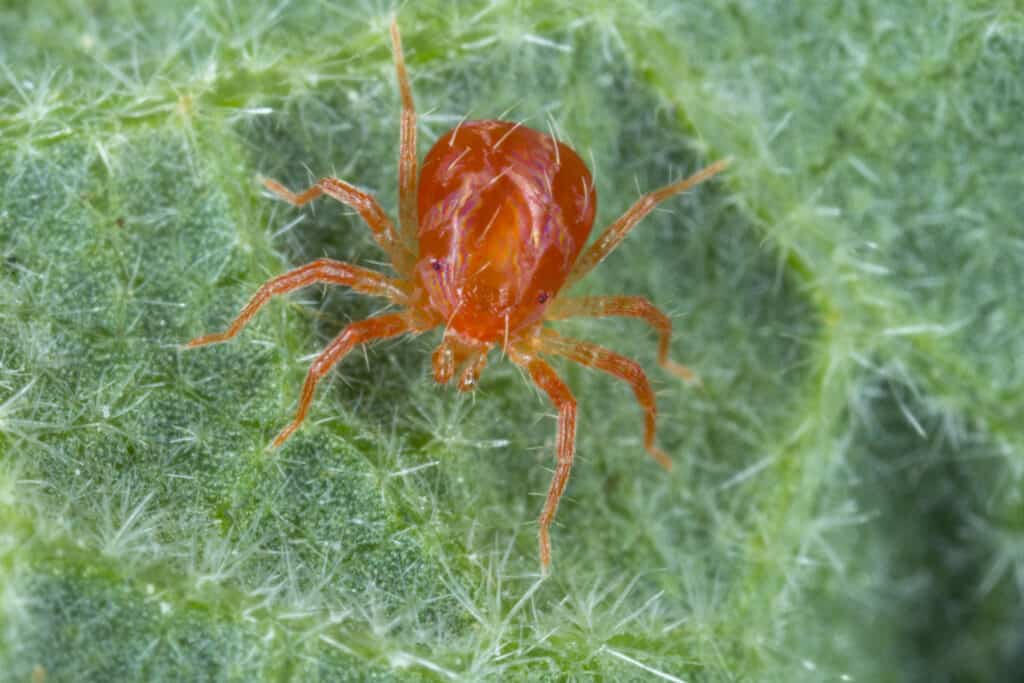
Spider mites are attracted to both the emerald green arborvitae and Leyland cypress trees.
©Tomasz Klejdsz/Shutterstock.com
Other Common Problems
Problems with the emerald green arborvitae are relatively few. However, browning leaves in the winter can be an issue, especially if conditions are dry or if temperatures take a sudden dive. Watering when there is a lack of rain or snow can help alleviate the problem.
A similar browning issue can happen with the Leyland cypress. It can be helpful to wrap new trees in burlap during especially cold winter weather. This will help protect them from winter scald.
Another common problem is the tree’s rapid growth. The pace of root growth below ground often does not match the tree’s speedy growth above ground. This leads to a tall tree with shallow roots. Windy conditions can bring these threes down. Pruning is needed to help the roots keep pace with the tree’s vertical growth.
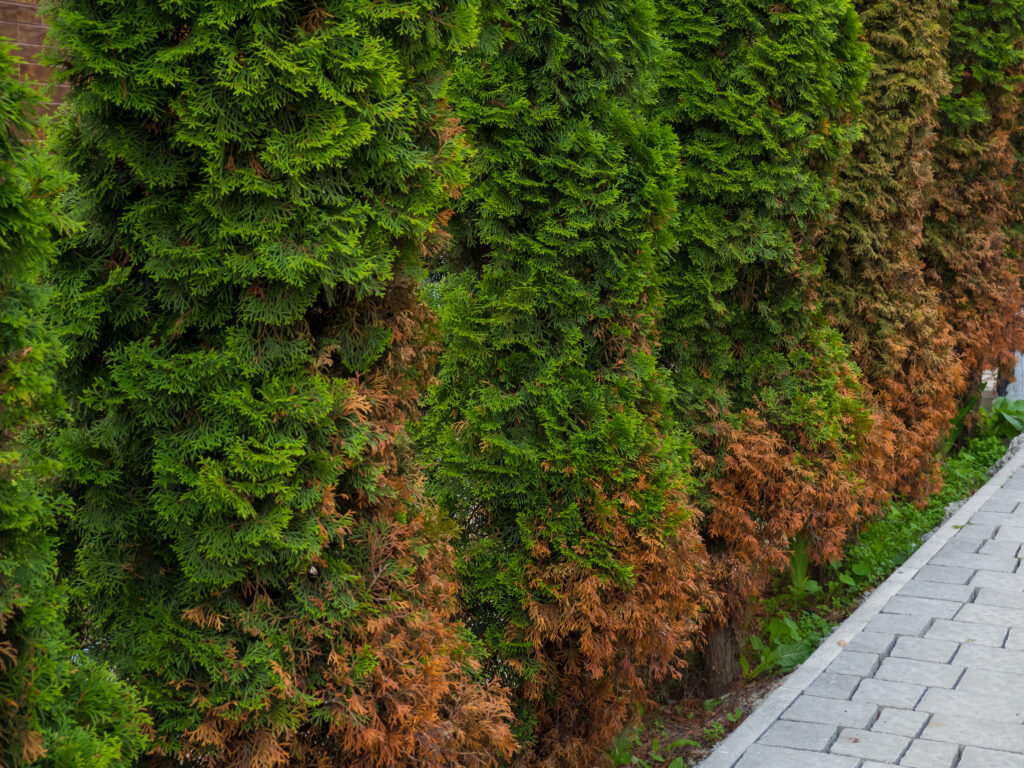
Arborvitaes can suffer from leaf browning in the winter.
©iStock.com/Mariana Pryimachuk
The photo featured at the top of this post is © Bruce Peter/Shutterstock.com
Thank you for reading! Have some feedback for us? Contact the AZ Animals editorial team.






